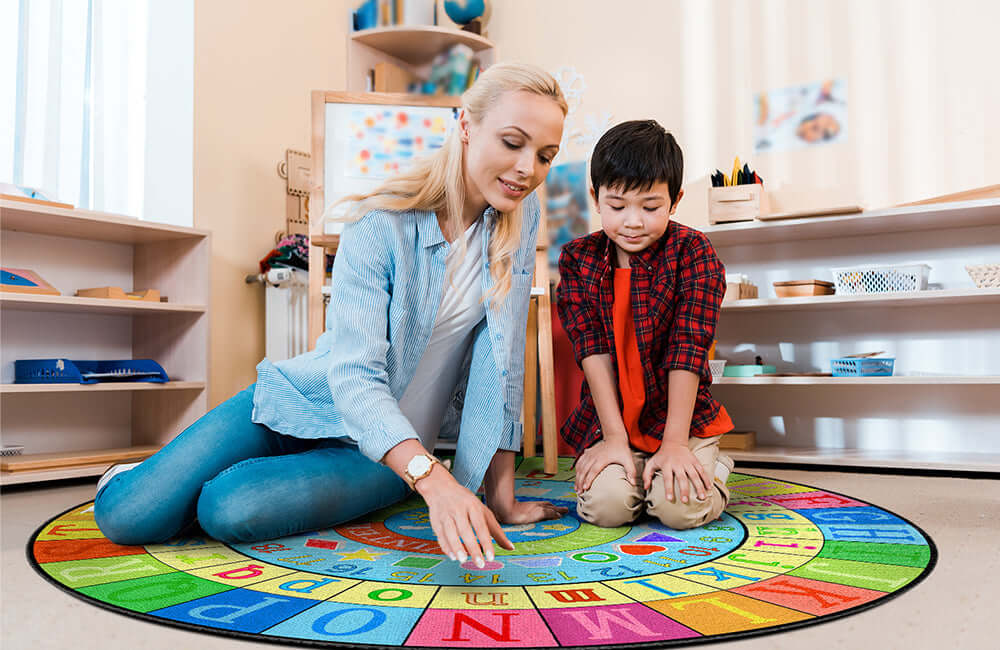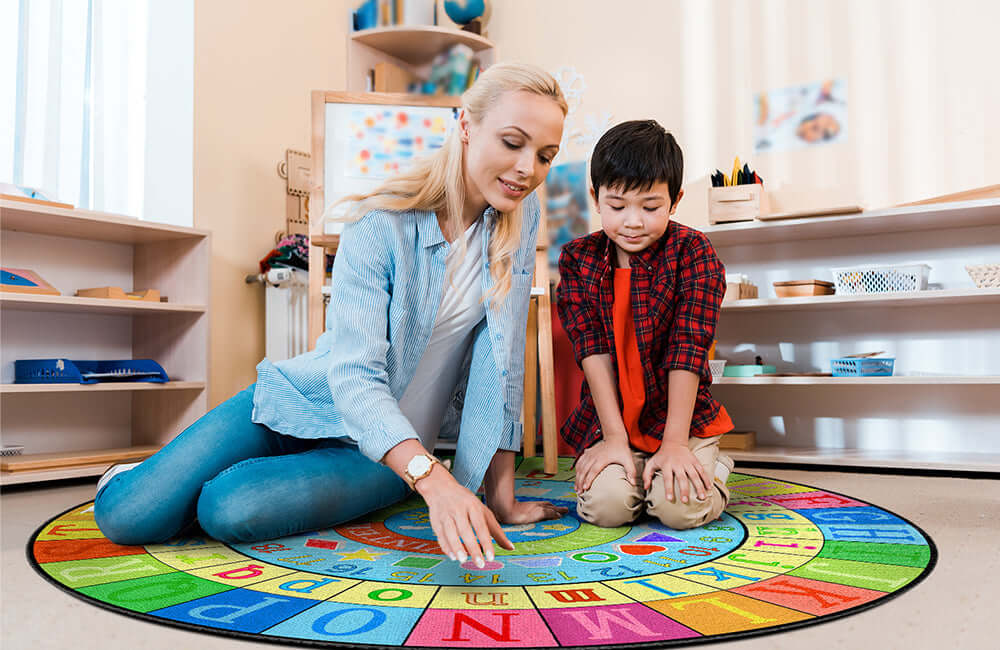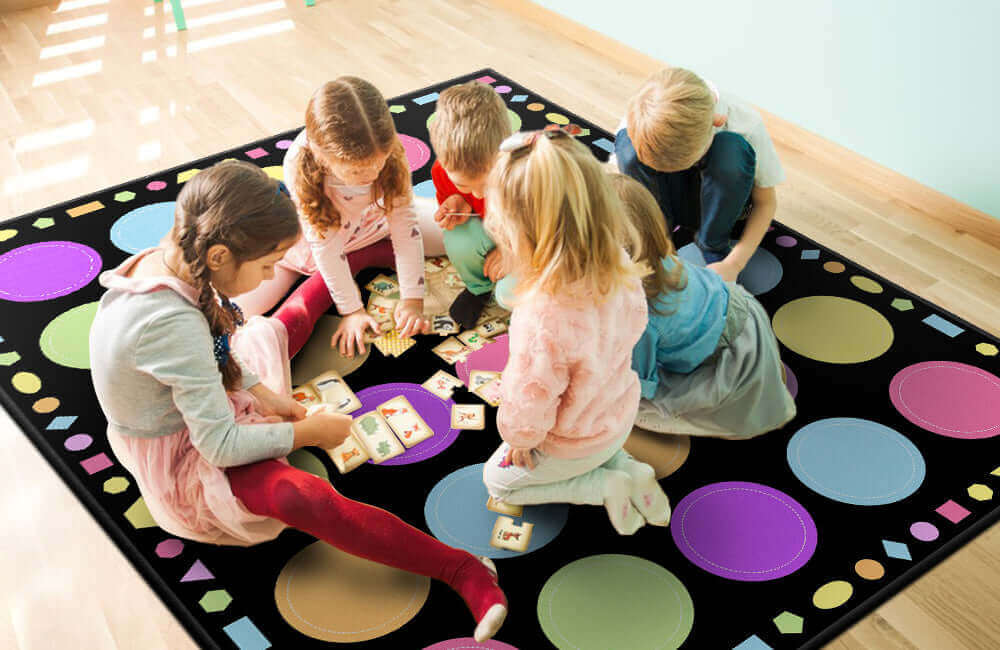The classroom environment serves as the third teacher—silently influencing mood, engagement, and learning outcomes.
Among the most impactful yet underutilized strategies for classroom transformation is the seasonal rotation of rugs.
This simple change can refresh learning spaces, spark curiosity, and create visual anchors for curriculum themes throughout the academic year.
Far more than decorative elements, strategically selected and rotated classroom rugs can transform the entire atmosphere of a learning environment with minimal effort.
Let's explore how this practical approach can revitalize your classroom and enhance the educational experience season by season.
The Psychology of Seasonal Refreshes
Environmental psychologists have long studied how physical spaces affect human behavior and cognitive function.
Research published in Educational Psychology Review demonstrates that novel environmental changes capture attention and stimulate brain activity, particularly in developing minds.
When students encounter refreshed classroom elements:
- Neural pathways associated with attention are activated
- Environmental awareness increases
- Cognitive engagement with surroundings improves
- Memory formation connected to physical context strengthens
This neurological response to environmental change creates perfect opportunities for introducing new concepts, reinforcing seasonal themes, and maintaining student interest throughout the school year.
Fall: Welcoming Foundations
As students enter classrooms in late summer or early fall, the physical environment sets expectations and establishes community. Fall rug selections should prioritize:
Community Building Elements
Fall is when classroom communities form, making circular classroom seating rugs with clear indicators particularly valuable for establishing routines.
Consider designs featuring:
- Warm autumn colors, perhaps found in earthy boho classroom rugs, that create a welcoming atmosphere
- Natural motifs that connect to seasonal changes
- Clear seating markers that help establish classroom routines
- Simple patterns that won't overwhelm students still adjusting to the classroom
Foundation Skill Support
Early academic foundations can be reinforced through thoughtful rug selection:
- Alphabet borders for emerging literacy support
- Number sequences for mathematical foundations
- Simple maps or geographic elements for social studies connections
- Base-ten patterns for early numeracy concepts
Many teachers at Boooom Jackson report that fall rugs with defined seating spots dramatically reduce transition time during the crucial first weeks when routines are being established.
Winter: Cozy Learning Environments
As outdoor temperatures drop, classroom environments should provide physical and emotional warmth. Winter rug rotations offer opportunities to:
Create Comfort Zones
- Higher-pile rugs introduce textural comfort during cold months
- Deeper colors create psychological warmth
- Patterns reminiscent of quilts or knitted textures evoke comfort associations
- Slightly smaller circumferences encourage closer seating, fostering community
Support Seasonal Curriculum
Winter curriculum often focuses on:
- Cultural celebrations and traditions
- Scientific concepts related to weather and seasonal changes
- Storytelling and literature during indoor recess periods
- Mathematical concepts of time, calendars, and cycles
According to Edutopia's environmental design research, "Creating cozy, defined spaces within classrooms significantly increases time spent in voluntary reading and small group collaboration,"making winter the perfect season for a plush reading rug that defines intimate learning nooks.
Spring: Growth and Renewal
Spring classrooms benefit from environmental refreshes that mirror the natural world's renewal. Spring rug rotations should consider:
Visual Stimulation After Winter Months
- Brighter colors on colorful classroom rugs that energize the learning environment
- Patterns that incorporate growth themes (plants, gardens, life cycles)
- Interactive elements that support increasingly complex learning games
- Designs that incorporate spring curriculum connections
Support for Advanced Learning
By spring, students are ready for:
- More complex pattern recognition
- Detailed map elements for expanded geographic awareness
- Mathematical concepts like symmetry, patterns, and spatial relationships
- Classification systems for scientific study
The Association for Supervision and Curriculum Development notes that spring often brings testing fatigue and attention challenges, making environmental refreshes particularly valuable for renewing student engagement.
Check out our spring collection, including soft pastel classroom rugs, specifically designed to stimulate learning during this season of growth.
Summer: Playful Transitions
Whether in year-round schools or summer programs, the final seasonal rotation embraces playfulness and outdoor connections:
Bringing the Outdoors In
- Nature-inspired designs that connect to outdoor learning
- Blues and greens that create cooling psychological effects
- Patterns that support active games and movement activities
- Designs that celebrate accomplishment and growth
Supporting End-of-Year Activities
Summer rugs can facilitate:
- Celebration circles for acknowledging growth
- Flexible grouping for culminating projects on large classroom rugs that accommodate the whole class
- Comfortable spaces for end-of-year read-alouds
- Defined areas for special activities and visitors
Summer rug rotations also provide perfect opportunities for thorough cleaning of fall rugs in preparation for the next academic cycle.
Implementation Strategies
Successful rug rotation requires thoughtful planning:
Strategic Timing
Consider rotating rugs:
- During school breaks to minimize disruption
- In conjunction with major curriculum shifts
- When student engagement naturally declines
- To coincide with classroom deep-cleaning schedules
Student Involvement
Increase impact by involving students:
- Hold simple ceremonies for unveiling new rugs
- Discuss the symbolism of new designs
- Create class rules for new spaces
- Connect rug changes to curriculum topics
Storage Solutions
Practical considerations include:
- Clean, dry storage locations for off-season rugs
- Proper rolling rather than folding to prevent creases
- Clear labeling systems for organized retrieval
- Protective covers to prevent dust accumulation
For comprehensive guidance on rug care and storage, visit our classroom organization resources.
Budget-Friendly Approaches
Seasonal rug rotation doesn't require purchasing multiple expensive educational rugs:
Economical Alternatives
- Rotate a single high-quality educational rug with simpler seasonal options
- Use outdoor/indoor rugs that can be thoroughly cleaned between uses
- Consider flat-weave rugs that store more compactly
- Explore carpet remnants with bound edges for temporary seasonal additions
Collaborative Solutions
- Partner with other grade-level teachers to purchase and share a rotation set
- Apply for classroom environment grants specifically mentioning research benefits
- Establish donor programs where families contribute to classroom environment funds
- Create a school-wide rotation system where rugs move between classrooms seasonally
DonorsChoose.org reports that classroom environment projects, particularly those citing specific learning benefits, have high funding success rates.
Conclusion
The strategic rotation of classroom rugs throughout the academic year represents a relatively simple intervention with significant impacts on learning environments.
By thoughtfully selecting designs that support seasonal curriculum, address psychological needs, and refresh visual environments, educators can transform learning spaces with minimal investment.
As you plan your classroom environment for the coming school year, consider how intentional rug rotation might enhance your teaching practice, support your curriculum goals, and create memorable learning experiences for your students.
The simple act of changing what lies beneath their feet can transform how students engage with your classroom community and curriculum.




Leave a comment
This site is protected by hCaptcha and the hCaptcha Privacy Policy and Terms of Service apply.